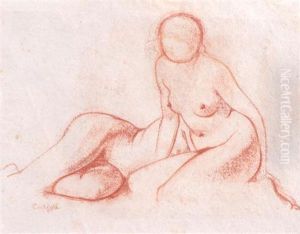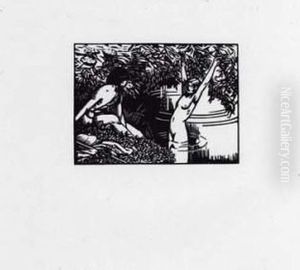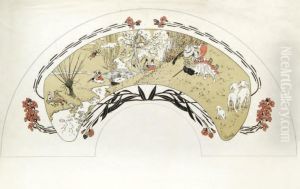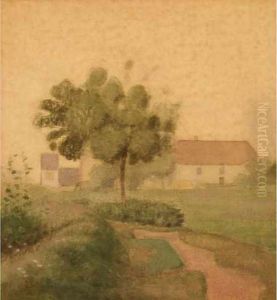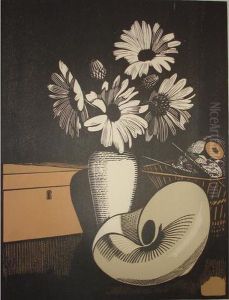Charles Emile Carlegle Paintings
Charles Emile Carlègle, born Charles Emile Egli on July 16, 1877, was a Swiss-born French artist known for his contributions to illustration, poster art, and painting. He adopted the pseudonym 'Carlègle' as a professional moniker, a combination of his surname with his initials. At a young age, he moved to Paris, which would become the center of his artistic career.
Carlègle's work spans a variety of media, including watercolors, drawings, and oil paintings. However, he is perhaps best remembered for his graphic art, especially his book illustrations and poster designs. He was active during the late 19th and early 20th centuries, a period marked by a flourishing of the decorative arts and the rise of Art Nouveau and later Art Deco, movements that influenced his style.
In addition to his graphic works, Carlègle also contributed to the decorative arts. He designed sets and costumes for theater productions, which reflects the multidisciplinary nature of art during the Belle Époque and interwar periods in France. His illustrations often graced the pages of popular books of the time, including works by classical and contemporary authors.
Carlègle's style is characterized by its elegance and often features a combination of bold lines and softer tonalities. He had a talent for capturing the essence of the period's aesthetics, blending traditional techniques with the modernist trends that were emerging in the early 20th century.
Despite his active role in the Parisian art scene, Carlègle did not gain the same level of enduring fame as some of his contemporaries, and as a result, detailed records of his life and career are not as abundant. He passed away on August 10, 1937, leaving behind a body of work that contributes to our understanding of the visual culture of his time.
